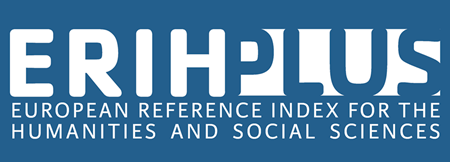TRANSLATION STRATEGIES OF LINGUOCULTUREMES IN A DUBBED VERSION OF THE “CARS” CARTOON
DOI:
https://doi.org/10.32782/folium/2025.7.24Keywords:
audiovisual translation, dubbing, adaptation, linguocultureme, cultural confirmity.Abstract
The article is devoted to the peculiarities of linguocultureme translation in audiovisual products and particularly, in this case, in the dubbing of the animated film “Cars” (2006). Research of the audiovisual translation features is becoming increasingly popular among researchers, as this type of translation has certain advantages, disadvantages and limitations that should be taken into account. One of the particularly significant challenges for the translators in this field is the adaptation of lexical units that convey cultural information. For the purpose of analyzing the peculiarities and specifics of the translation of such units within audiovisual translation, the descriptive method, the continuous sampling method, the contextual analysis method and the transformational analysis method were applied at different stages of the research accordingly. In order to gain a more profound and greater understanding of audiovisual translation its development, the reasons for its distinction as a separate field of translation, existing classifications of audiovisual translation, the diversity of its forms, the requirements and expectations for translators were examined. Dubbing was characterized as one of the possible forms of audiovisual translation. Its emergence, advantages and disadvantages were studied as well. Particular attention was paid to the cultural aspect of audiovisual translation, especially, its difficulties and factors that may influence the perception of the final product. With this in mind, the work characterized linguoculturemes as cultural information carriers and their possible translation strategies were defined. The practical section of the study involved the collection of empirical research material in the form of linguoculturemes, identifying the methods of their translation, and assessing suitability of their application in the context of the cartoon. The research revealed that each linguocultureme required an individual approach to translation in order to maintain references to American culture. The results demonstrated the importance and necessity of their proper translation for the accurate conveyance of the cultural values they represent.
References
Бойко, Я.В. (2015). Лінгвопрагматичні аспекти перекладу культурно маркованої лексики в англомовних публіцистичних текстах. Вісник Київського національного лінгвістичного університету. Серія «Філологія», 2, 7–13.
Єлісеєва, С.В. (2019). Культурологічний аспект перекладу аудіовізуального контенту. Науковий вісник Міжнародного гуманітарного
університету. Серія «Філологія», 43, 56–59.
Каракевич, Р. О., & Радченко, О. А. (2023). Лінгвокультурема як одиниця когнітивного відображення ментальності й культури в
мові (на матеріалі фразеологізмів німецької та української мов). Науковий вісник Міжнародного гуманітарного університету. Серія «Філологія», 64, 89–92.
Колонюк, С. М. (2021). Базові поняття лінгвокультурології: лінгвокультура й лінгвокультурема. Лінгвістичні дослідження, 54, 220–228.
Кустовська, І. М. (2024). Аудіовізуальний переклад при вивченні комунікативно спрямованих дисциплін. Збірник наукових
праць Національної академії Державної прикордонної служби України. Серія «Педагогічні науки», 4, 84–98.
Лук’янова Т. Г. (2025). Аудіовізуальний переклад: soft and hard skills. Наукові записки. Серія «Філологічні науки», 213, 284–288.
https://doi.org/10.32782/2522-4077-2025-213-40.
Матківська Н. А. (2015). Питання методології дослідження аудіовізуального перекладу. Науковий вісник Дрогобицького державного
педагогічного університету імені Івана Франка. Серія «Філологічні науки (мовознавство)», 3, 147–152.
Мізин, К. І., & Петров, О. О. (2018). Зіставна лінгвокультурологія: методологічні проблеми та перспективні методики. Кременчук :
Вид-во ПП Щербатих О. В.
Мітіна, О. М., Ростомова, Л. М., & Драпалюк, К. І. (2022). Дублювання як вид аудіовізуального перекладу. Вчені записки ТНУ імені В. І. Вернадського. Серія «Філологія. Журналістика», 6, 245–242. https://doi.org/10.32782/2710-4656/2022.6.1/40
Перванчук Т. Б. (2021). Аудіовізуальний переклад: основні види та особливості. Вчені записки ТНУ імені В. І. Вернадського. Серія
«Філологія. Журналістика», 4, 121–126.
Chaume, F. (2013). The turn of audiovisual translation. New audiences and new technologies. Translation Spaces, 105–123.
Espindola, E., & Matielo, R. (2011). Domestication and foreignization: an analysis of culture-specific items in official and non-official
subtitles of the tv series Heroes. Cadernos de Tradução, 27, 71–93.
Pérez-González, L. (2019). Audiovisual translation. Routledge encyclopedia of translation studies, 31–35.












